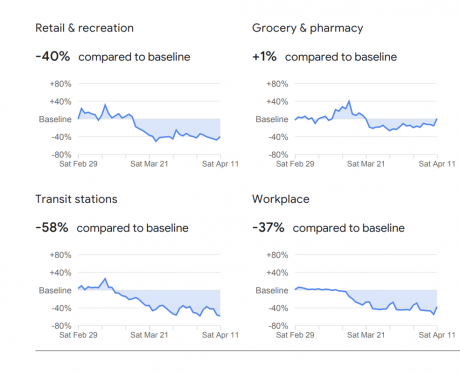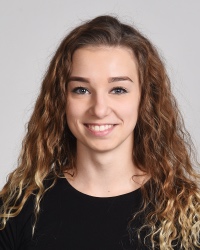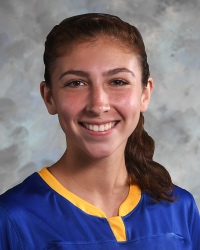What is COVID-19?
COVID-19 is a disease caused by the novel coronavirus SARS-CoV-2.
Why is the disease called COVID-19?
COVID is an acronym for "coronavirus disease." The "19" is for the year of discovery, 2019.
What is SARS-CoV-2?
SARS is an acronym for "severe acute respiratory syndrome." CoV is an acronym for "coronavirus." And the "2" means this is the second SARS-CoV discovered. The designation was applied to the virus on Feb. 11, 2020. This name was chosen because the virus is genetically related to the coronavirus responsible for the SARS outbreak of 2003. Although related, the two viruses are different.
Further reading:
What is a coronavirus?
There are many types of viruses and coronavirus is a type of virus that has crown-like spikes on its surface, hence the name "corona," for "crown." The first discovery of a coronavirus was by June Almeida, a woman in Scottland with little formal education but became a lab technician in Glasgow. Coronaviruses are one of the more than 200 types of viruses that cause the common cold. Recently, coronaviruses have emerged that cause serious respiratory conditions. These viruses jumped from animals to humans. These include MERS-CoV, SARS-CoV, and SARS-CoV-2.
Why is it sometimes called "novel coronavirus"?
"Novel" simply means new. The virus SARS-CoV-2 was not identified by scientists until December 2019.
Further reading:
How did the pandemic start?
It's still unclear how SARS-CoV-2 made the jump from bats to humans but it seems certain the first infections were in Wuhan, China, perhaps in November 2019, but certainly by early December 2019. The Chinese government has been criticized for initially trying to cover up word of a new virus with human-to-human transmission. Whether the virus was transmitted through a wet market or escaped from a Chinese lab that was studying bat viruses is unknown.
Further reading:
Wasn't SARS-CoV-2 created in a lab?
Modern science has a lot of tools to map genomes, and in organisms such as viruses, track their evolution, which is how we know SARS-CoV-2 wasn't created in a lab. We know it came from a bat. What we don't know is how it made the leap from bats to humans.
Further reading:
When did SARS-CoV-2 reach U.S. shores?
Another question still under debate. The first official case was reported Jan. 19 in the state of Washington. The patient had traveled to China. The first case in New York was reported on March 1 and the woman had traveled to Iran. For weeks, officials believed the first U.S. death was in Washington on Feb. 29, but recent autopsies in Santa Clara, Calif., revealed that two people died as a result of COVID-19 on Feb. 6. There is much speculation that the virus was being transmitted in the United States before these dates. Antibody tests in California have been used to suggest that the disease arrived earlier and is more widespread than previously thought, but these studies have been challenged for methodological flaws.
Further reading:
What makes SARS-CoV-2 particularly worrisome?
There are three reasons health experts became alarmed about COVID-19: It is easily transmitted to a lot of people quickly; there is no vaccine and no natural immunity at the start of the outbreak; and based on data available at the start of the outbreak, it appeared to have a mortality rate much higher than other viruses, including those that cause influenza. Scientists do not understand why but some people can become infected and never know it, or have such mild symptoms, they don't suspect they're carriers. For most people who do show symptoms, the symptoms can take days to manifest. This means infected people can spread the virus without knowing it as they go about their daily lives as they normally would. Because this is a novel, or new, virus, people who haven't been infected have no immunity. The mortality rate is still under debate but early reports from China indicated that more than three percent of those who were infected died. The mortality rate is been both higher and lower in other population groups and since it's unclear in any population group how many people are infected, the mortality rate is likely even lower than currently reported numbers. But even using available data for a lower mortality rate, given how quickly the virus can spread and the lack of herd immunity, a lot of people could still die without protective action by society.
How is SARS-CoV-2 spread?
Like many things about this coronavirus, there are many questions that scientists are still trying to answer and this is one of them. The most likely mode of transmission is respiratory. This means people are more likely to become infected through breathing air that contains aerosol spray containing the virus or droplets of moisture that contain the virus. It's also possible that body secretions such as tears contain the virus. There is also some evidence that fecal-oral transmission is possible. Germs can also be transmitted through surfaces and depending on the surface, SARS-CoV-2 can survive for 24 to 72 hours on some surfaces. This makes it possible for a person to become infected by touching a surface and then touching his or her mouth.
Why is it important to know how SARS-CoV-2 is transmitted?
The mode of transmission could have policy ramifications for how the disease is fought at a government level and will inform members of society on their best course of action to slow transmission. The mode of transmission relates to the effectiveness of social distancing, in what environments social distancing is most effective or perhaps not necessary, whether people should wear masks, and what custodians of public places must do to protect people. For example, if the most frequent form of transmission is in droplets, that likely means there needs to be a method that propels the droplets through the air from one person to another, such as through coughing or sneezing -- or air conditioning, as one study suggests. If the primary mode of transmission is through an aerosol, that means the virus can hang in the air of an enclosed space for hours infecting everybody who passes through that space. If the mode of transmission is droplets, that means masks are much more effective not only at protecting others from asymptomatic carriers, but may also provide some protection people wearing masks who have not been infected. If the transmission is through aerosol, masks are less effective (though that doesn't mean not effective).
Further reading:
Can our pets become infected?
There are cases of other mammals contracting COVID-19, including dogs in China, tigers at Bronx Zoo, and two domesticated cats in New York.
Can I become infected from eating food?
There is currently no evidence that the novel coronavirus is transmitted through food.
Is package delivery safe?
There is no evidence of a person being infected from the virus traveling on a package delivered to a home or business and scientists doubt it is possible even though the virus can survive on cardboard up to 24 hours.
Further reading:
Isn't COVID-19 just another version of the flu?
There are some important differences between COVID-19 and influenza. First, people who contract the flu are contagious and symptomatic simultaneously. This will naturally cause many people to self-quarantine making it less likely they will infect others. All people who contract COVID-19 have no symptoms for days while being infectious and many people never become symptomatic or have such mild symptoms they don't realize they've contracted the diseases. This increases the likelihood these carriers will infect other people, including people most susceptible to serious, even deadly, complications. There are vaccines for known strains of influenza and as much as 60 percent of the U.S. population is inoculated every year, with the highest percentage among those vulnerable to complications. There is no vaccine for COVID-19. There is also little to no natural immunity to COVID-19 in the population while there is some to influenza. This lack of herd immunity, either through natural immunity or vaccination, which experts say needs to be 60 or 70 percent of the population to be effective, also makes widespread infection much more likely. While the mortality rate of COVID-19 is still unclear even the lowest estimations indicate it is deadlier than the flu.
Further reading:
What are the symptoms of COVID-19?
A person infected with COVID-19 may start showing symptoms within two to 14 days of exposure. Symptoms include fever, dry cough, shortness of breath, loss of taste or smell, sore throat, headache, chills. If you suspect you are ill, you should contact your primary health care provider by phone or through your patient portal.
Further reading:
How do we slow the spread of COVID-19?
First, people who have been infected must be identified and isolated. Because it's possible to be infected and asymptomatic, this requires testing and contact tracing. When people test positive, public health officials must identify other people who have come into contact with the infected person and test them. People who have been infected are placed in isolation. People who have come into contact with them are placed in quarantine. As a society, effective measures at slowing the spread include social distancing (minimizing contact with other people), handwashing, and mask wearing.
Why is it important to slow the spread of COVID-19?
The faster the diseases spread, the more people who become seriously ill. If too many people become ill simultaneously, our hospitals can become overwhelmed with patients. This could mean many people don't receive adequate treatment and more people die. Slowing the spread helps avoid this nightmare scenario and also allows the health care system to build capacity, including building up a supply of ventilators and personal protective equipment for health care workers.
What's the difference between isolation and quarantine?
People who are known to be contagious are placed in isolation. This means avoiding contact with other people, even when living in the same residence (public health departments can provide temporary housing when home isolation is impossible). Quarantine is ordered when people have come in close contact with a person who is known to have contracted the disease but have not yet shown symptoms or have not tested positive. A person in quarantine is not isolated from other people but must follow specific procedures to avoid close contact and take precautions against spreading the disease in case they are infectious but do not know it.
Further reading:
How does COVID-19 kill?
It attacks a victim's respiratory system, heart, brain, blood, and other vital organs. It can also force the body's immune system to kick into overdrive, which causes the body to kill itself.
Further reading:
I heard the number of COVID-19 deaths is inflated because deaths by other causes are being attributed to COVID-19. Is this true?
It was widely reported at the outset of the pandemic that COVID-19 is most dangerous for the "vulnerable population," which means the elderly, people with heart and respiratory conditions, diabetes, and obesity. Now conspiracy theorists want to use the fact that COVID-19 does kill people with other health issues as a reason to claim that the number of COVID-19 deaths is being over-reported. It should be obvious that even if a person had a heart condition or cancer they might have lived years longer if they had not contracted this coronavirus. Further, COVID-19 causes cardiac arrest in even healthy people so why should such a death be reported as anything other than COVID-19? Arguably, COVID-19 kills nobody. It causes other organs to fail either by a direct attack on those organs or by causing the immune system to weaken those organs. o follow the logic of the conspiracy theorists to its natural conclusion, there have been zero COVID-19 deaths. Obviously, that preposterous.
Further reading:
How is COVID-19 treated?
There is no FDA-approved treatment. For mild cases, patients are isolated at home or at a public health agency's approved location and encouraged to rest and hydrate. For severe cases, patients are hospitalized and given oxygen and perhaps an IV for hydration. Some patients are placed on a ventilator, which is a machine that breathes for the patient when the lungs can no longer function on their own (because the membrane around the lungs has become stiff). Most patients placed on a ventilator succumb to the disease.
Further reading:
What new treatments are being developed?
While there are no FDA-approved treatments, there are more than 500 clinical trials either under way or planned. Unfortunately, many of the studies are small and lack real control groups, complicating the search for a viable treatment. Typically, clinical trials take years and most fail. It's hard to say when or if scientists will uncover an effective treatment.
What will it take to "reopen our economy"?
The main goal of the "flatten the curve" strategy was to keep hospitals from becoming overwhelmed with the sick and dying. That strategy has so far been successful. In many parts of the country, such as New York, the curve appears to have flattened. But that doesn't mean SARS-CoV-2 has gone away. The CDC recommendation is to reopen the economy slowly, in phases, and relying on testing, contact tracing, and isolations and quarantines to keep the rate of transmission below a 1 to 1.2 (meaning less than one person infecting 1.2 other people on average).
Further reading:
Are there more people infected than we know about?
With a disease with a high transmission rate and asymptomatic people, there are certainly people who were infected that have not been counted by health officials.
Further reading:
Is COVID-19 seasonal?
Respiratory diseases are typically seasonal. The seasonality of viruses is due to a combination of factors that are unique to each virus, including how the virus survives in heat and humidity and the human body's own response to the virus. At this point, there isn't enough information about SARS-CoV-2 to reach a conclusive determination. Given the fact that there have been significant outbreaks in the Southern Hemisphere suggests that COVID-19 is not seasonal.
Further reading:
If testing is key to controlling transmission, why isn't there more testing?
The United States started late on testing because of issues with the CDC's first test and there has been an ongoing issue with the supply chain for testing material, from swabs to the assays used to detect the virus in samples. The situation is improving and there are new tests in development that don't require swabs.
Further reading:
What about antibody testing?
Antibody testing can be used to detect people who were infected with SARS-CoV-2. But not all antibody tests are as equally effective and cannot be relied on by individuals to determine if they've become immune to the disease. Antibody tests are most useful for giving a better estimate of how many people have actually been infected in a given population group.
Further reading:
I heard Sweden didn't close its economy so why was it necessary to close ours?
Much has been made on social media about the Swedish government's approach to the novel coronavirus, which was to not mandate business closures and enforced social distancing. The result appears to be a higher death rate than other countries while the economy has also been harmed.
Further reading:
Are people who survive COVID-19 immune? Can they be reinfected?
This is a key question that may determine the future of herd immunity and whether a vaccine can be developed and the virus is still so new, scientists have no definitive answer to the question of individual immunity.
Further reading:
When will there be a vaccine available?
The FDA has never approved a vaccine for humans for any type of coronavirus, and vaccines for pets and livestock have proven weak. Estimates for the development of a vaccine range from 12 months to 18 months, to four years to never. But there are also promising vaccine trials under way.
Further reading:
Will there be a second wave of COVID-19 cases? When will this be over?
Like anything, nobody can predict the future but second and third waves in pandemics are common.
Further reading:




